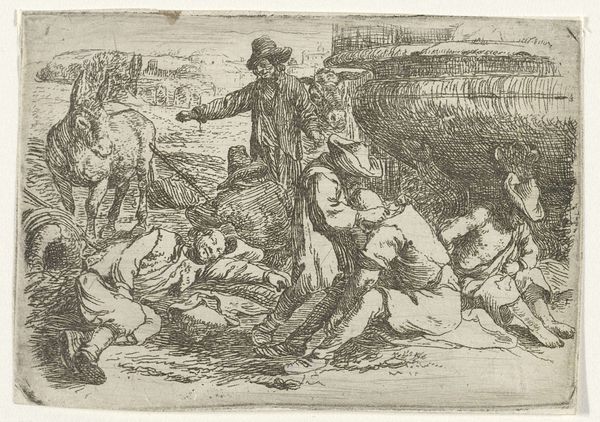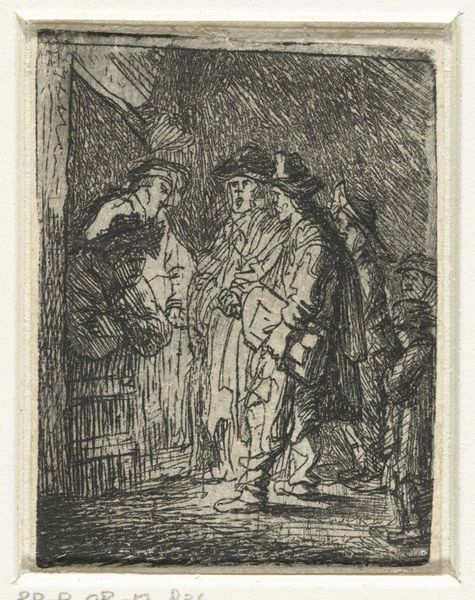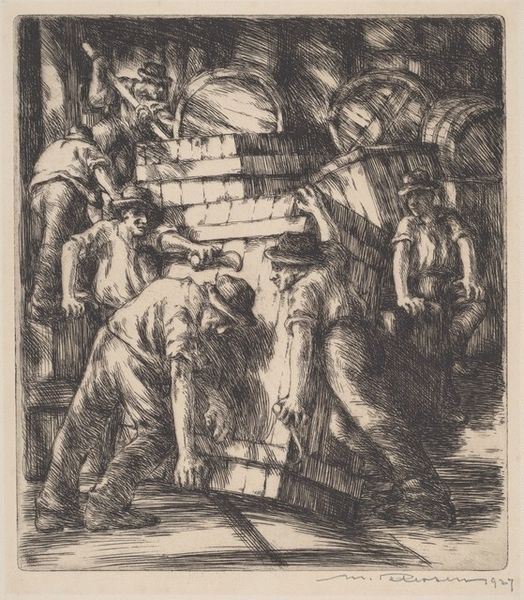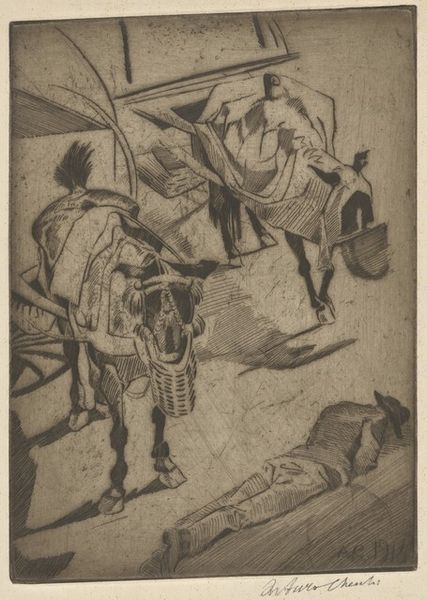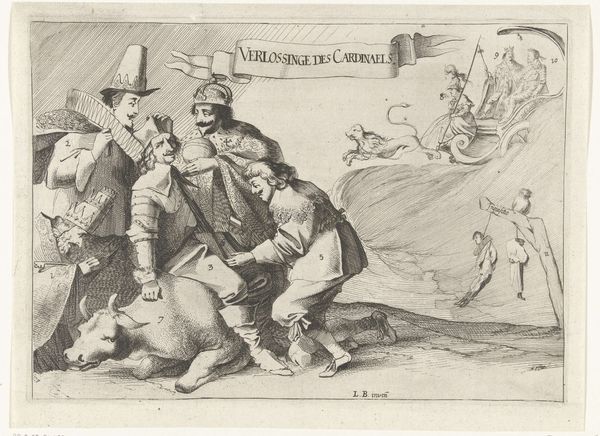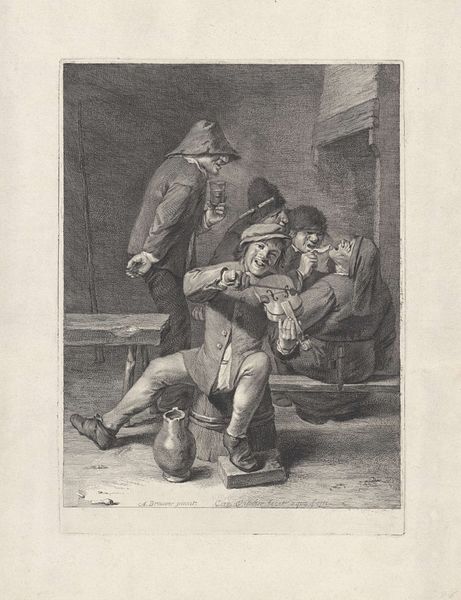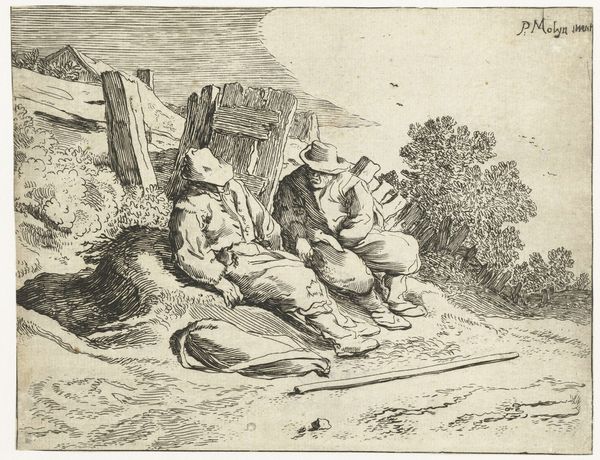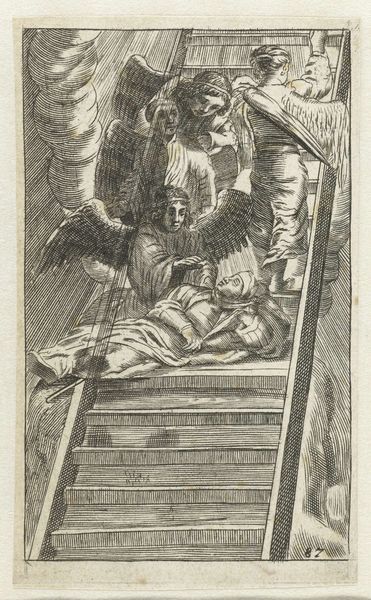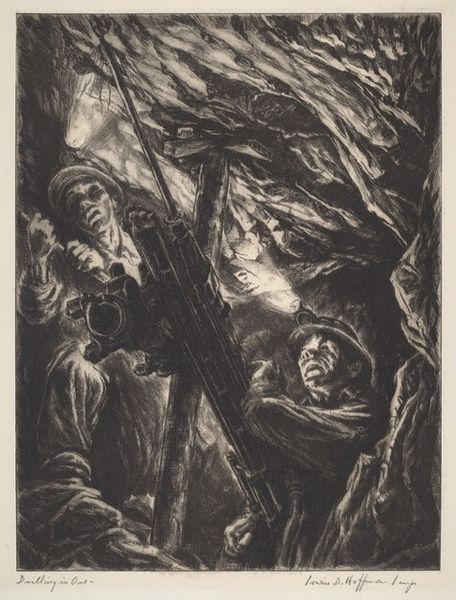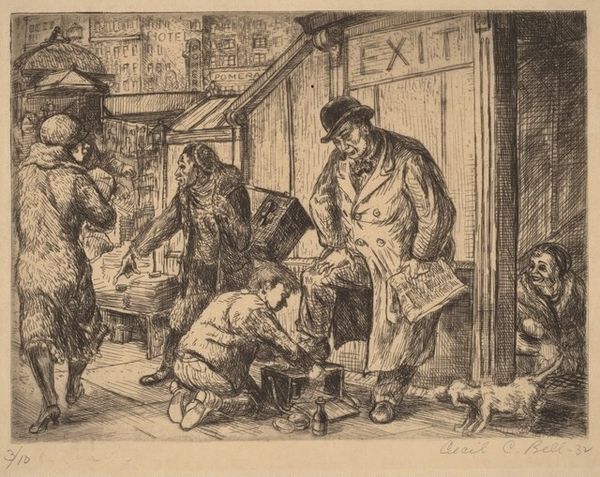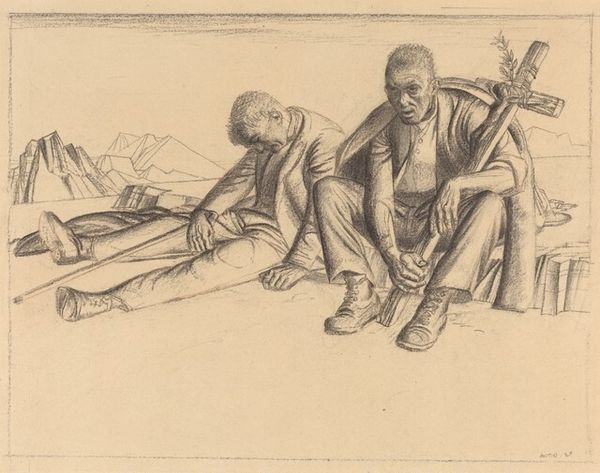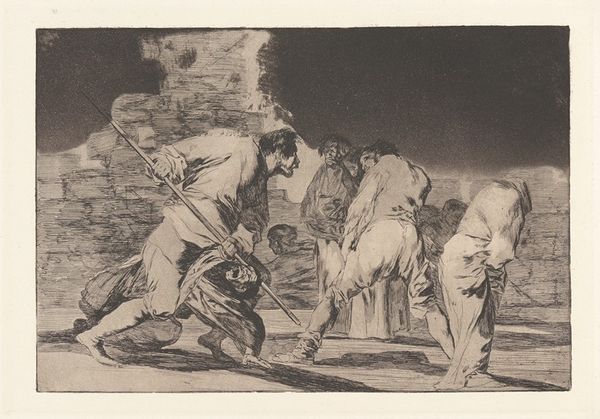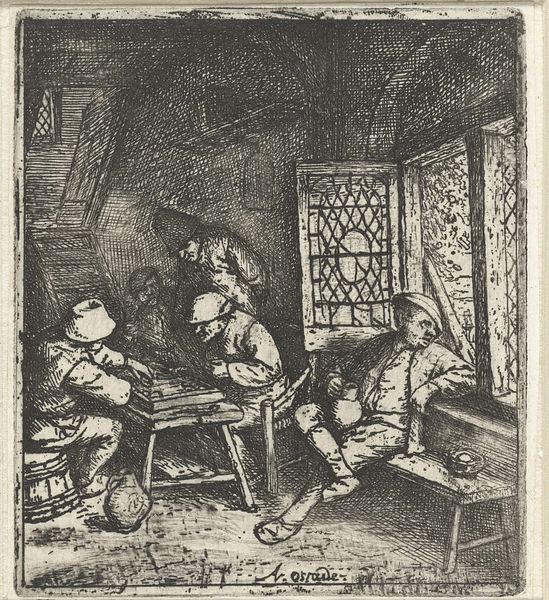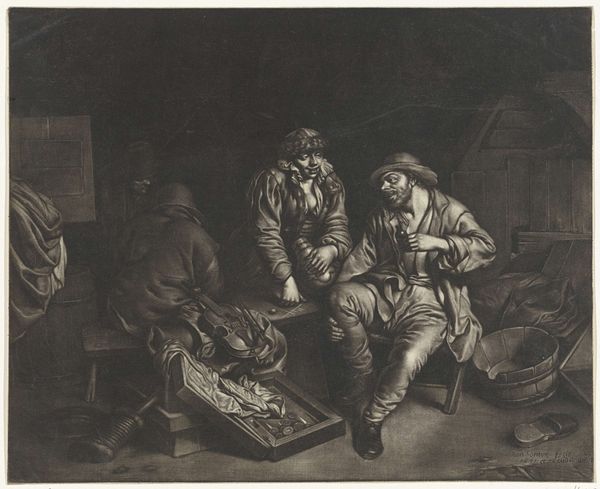
drawing, print, etching, ink
#
drawing
#
ink drawing
#
narrative-art
# print
#
etching
#
landscape
#
figuration
#
ink
#
history-painting
Copyright: Public domain
Curator: This is Théophile Alexandre Steinlen's "Les Camarades," created in 1917 using etching and ink. It’s a haunting piece. What strikes you first? Editor: It’s the overwhelming darkness. The somber atmosphere immediately speaks of loss and the brutal realities of war. The low tonal range focuses my eye on the soldiers themselves. Curator: Note how Steinlen uses a network of tightly rendered, linear strokes to define form but also imbue the scene with that sense of oppressive dread. It's masterfully achieved. This reflects the common theme in Steinlen’s work—the impact of societal forces on human beings. Here, of course, that force is war. Editor: The soldiers carrying their fallen comrade are so burdened. I see the motif of sacrifice; one gives their life, the others give their strength in carrying their compatriot from the dark foreground to an even darker background of barbed wire and shattered tree trunks. There is a sense of almost religious martyrdom present. Curator: The stark contrast between the lit figures and the darkness beyond effectively leads your eye. Look closely, and you can almost see the weight they bear—literally and figuratively etched into their posture and their faces. There's almost no individual characterization here, the lines give us posture, and that tells the entire story of pain and labor. Editor: Exactly, and those sharp lines are essential to my reading of the work—a jaggedness in keeping with both its subject matter and function as a stark indictment of war’s devastation and the destruction of not only people but also basic bonds of fraternity and honor. "Les Camarades"—the comrades. There is great depth here, a shared cultural understanding is being passed to future generations through powerful imagery. Curator: The deliberate arrangement certainly emphasizes these universal experiences, stripping away any specifics for an inclusive impact on viewers. This image remains sadly relevant, speaking to an ever-present cycle of conflict. Editor: Yes, Steinlen captures the emotional weight through simple imagery, the burden of duty. Ultimately, it transcends the specifics of any single conflict, entering into cultural memory.
Comments
No comments
Be the first to comment and join the conversation on the ultimate creative platform.
